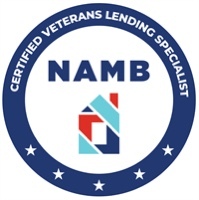What Is a Bridge Loan and How Do They Work for Homeowners Looking to Borrow?
Everything Portland Borrowers Need to Know About Bridge Loans
True to their name, bridge loans are a unique borrowing option that lets buyers “bridge the gap” between buying and selling a home. Typically taken out for a short period of time (often ranging from a couple of weeks to a few years), a bridge loan gives buyers the flexibility they need to buy a home before selling their existing home.
Sound like a sweet deal? Bridge loans can ease the process of fronting a down payment if you haven’t already sold your home, but there’s a lot to learn about bridge loan options and their risks and benefits.
Getting to Know Bridge Loans
First thing’s first: you’re probably wondering what differentiates a bridge loan from other standard loans. As we mentioned, a bridge loan is a commonly used short-term loan option that enables homeowners to buy another home before selling their current property. You may be wondering how this works.
The short answer is: by providing the start-up funds to apply for a down payment or initial mortgage installments on a new home, the bridge loan makes it possible for someone in the process of buying a home to balance all of the bills.
It’s similar to a home equity line of credit; however, bridge loans have a few key differences that we’ll dive into later.
For now, here are a few basics about bridge loans that you should become familiar with:
- Compared to traditional loans, bridge loans typically have a faster process for application, approval, and funding
- Often, bridge loans do not have repayment penalties
- Due to the quick, convenient access to funds, bridge loans tend to carry high interest rates and potentially steep origination fees
How to Know When You Should Opt for a Bridge Loan
While the steep interest rates and large fees can scare off some potential bridge loan borrowers, there are a couple situations where bridge loans can in fact “bridge the gap” for owners who are looking to make the dream of a new Portland home a reality.
For instance, if you are a homeowner who is in the contract phase of closing the sale of the home, but you want to make an offer on another home without a sales contingency, a bridge loan is one way to make that happen. In this case, the bridge loan may pull equity from your pending home sale, so that you can then apply those funds to a down payment on a new home.
Likewise, even if you’ve only signed the listing agreement on your existing home and you haven’t entered the contract negotiation phase, you still might want to consider the value of a bridge loan.
In this situation, you can take equity from your current property, and then use the funds when buying a new home. However, any outstanding payments on the bridge loan will be factored into your new Debt-to-Income ratio when you purchase your next property.
Comparing a Bridge Loan to HELOC
You may be wondering: is this my only option for short-term financing to bridge the gap between buying and selling a home? In fact, it’s not. Similar to bridge loans, you can also apply for a Home Equity Line of Credit, or HELOC, to finance your new home. Just like a bridge loan, a HELOC provides the up-front funds to purchase a new home before selling your existing property.
There are a couple of differences between the two funding options that are worth knowing about. For starters, a HELOC requires you to have a lot of equity built in to your existing home; second, the interest rate you get depends on the market (as opposed to the fixed rate of a bridge loan); and third, you must make monthly payments on your HELOC until your existing home sells.
If you’re financially able to carry three mortgages (existing home, HELOC, and your new home), then a HELOC can save you money in terms of start-up costs and fees.
However, if this isn’t a financially viable option, then a bridge loan may be the right solution that allows more flexible repayment on your loan, and you aren’t required to start paying your bridge loan until after you’ve sold your existing property.
Additional Resources for Understanding Bridge Loans
If you’re curious about different kinds of bridge loan programs, and you’d like to learn more about how to find the right kind of bridge loan for you, check out additional resources here, at American Pacific Mortgage. And when you’ve done a little digging, reach out – Options is here to help!





